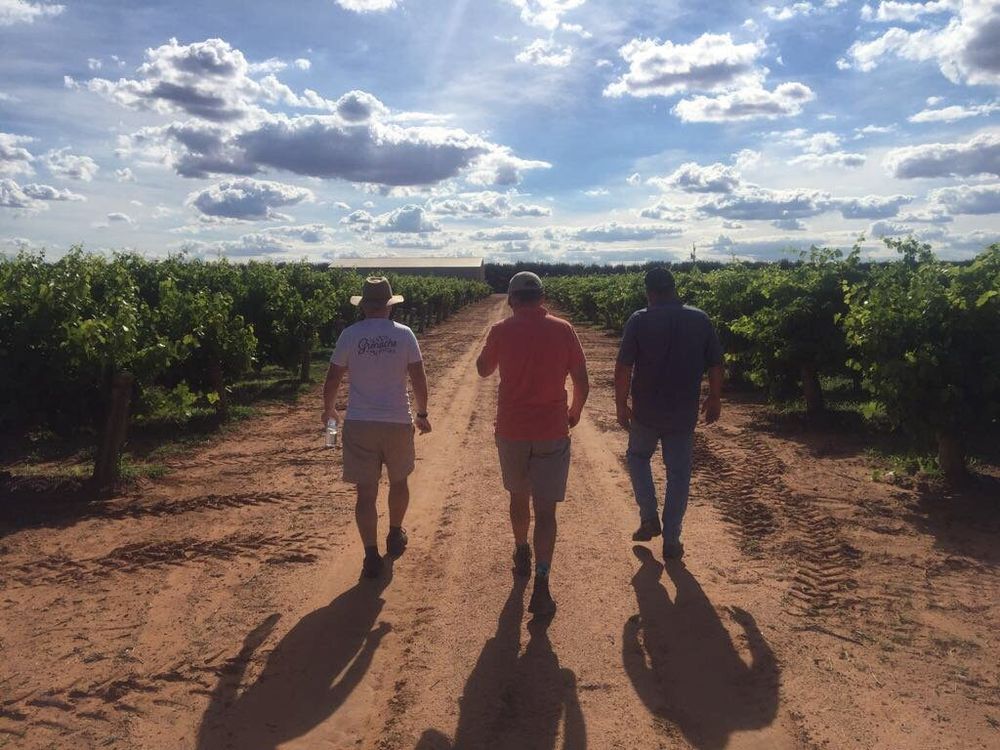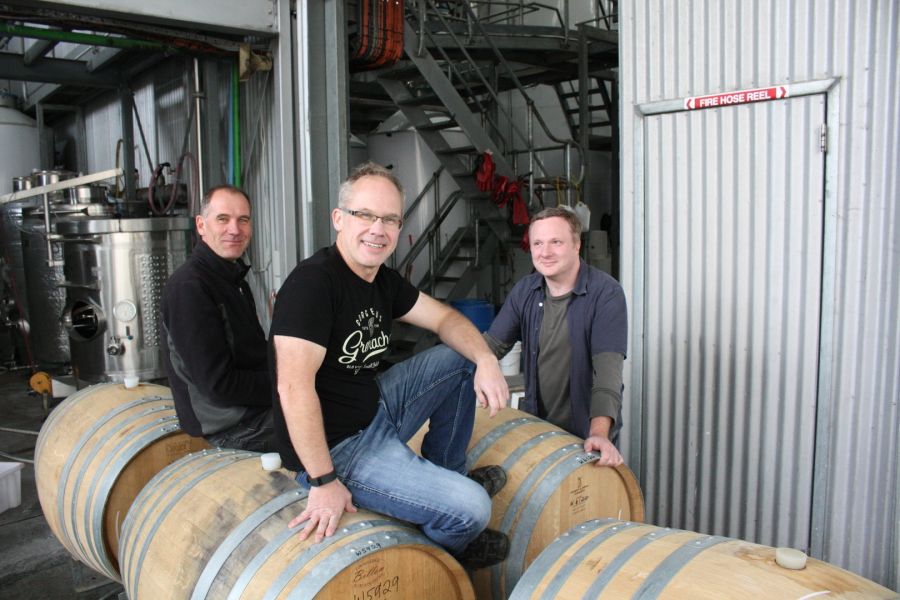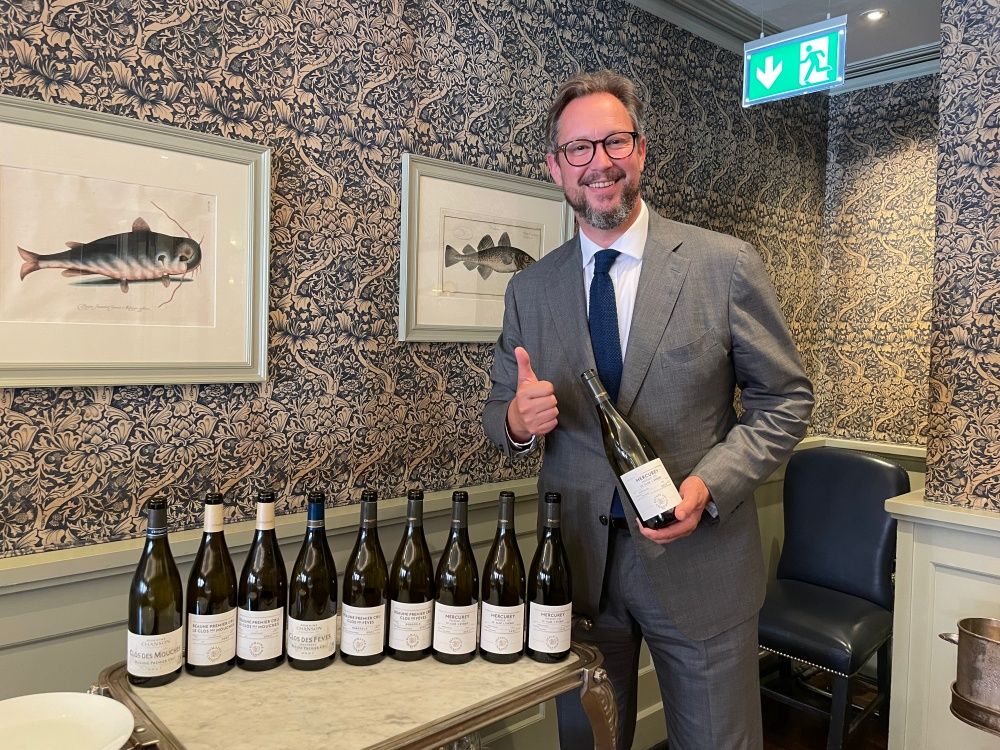How South Australia’s Riverland is being “reimagined” by Giles Cooke MW and Thistledown Wines to create quality wines from the regions old vines and offer a new premium source of wine from this key Australian wine region for wine buyers.

Giles Cooke MW believes the old vines of the Riverland offer great potential for making quality, hand crafted wines
I mentioned to a world weary wine professional that we were embarking on an exciting project in South Australia’s Riverland and was met with the response that “the Riverland is the Riverland, it’s all the same”.
Of course, such a sentiment is not uncommon. In wine broker’s parlance, the Riverland is a “warm inland irrigated zone” and to most people it is simply the powerhouse of the Australian wine industry. Bereft of any character, nuance of terroir or potential for quality, the people of the Riverland became accustomed to derisory sums for their produce. In some years, the price per ton of fruit was less than it cost to provide the water to irrigate the vines.
But everything changes and a combination of increased competition for economic sources of wine, the reawakening of the Australian spirit for experimentation and a short term blip in European wine production have produced an environment ripe for the reimagination of the Riverland.
The Riverland region of South Australia was developed in the late 19th century as an irrigation colony with settlements first in Renmark but, encouraged by the success of the fruit and wine industries, it was followed by developments in Berri, Blanchetown and Loxton.
In 1919 the Soldier Settlement Bill provided soldiers returning from war with the opportunity of land to cultivate and these schemes continued through to post 2nd World War. These “soldier blocks” have largely been lost, their steadily reducing yields not consistent with the low price, high yield demands of the wider industry.
The region flourished during the height of the Aussie wine boom with prices per ton three times what they would be 15 years later. As plantings grew right across the country, fuelled by the industry’s 2025 vision, the gap between the price for cool, premium fruit and warm inland fruit narrowed and so demand for the warm inland fruit began to falter. The region began a prolonged period of decline which is only now being arrested.
An alternative future

The Thistledown team walking through the vines
Much of the renewed interest in the region has been for the new plantings of alternative varieties. Championed by Ashley Ratcliff at Ricca Terra Farms at Barmera, plantings of Fiano, Vermentino, Nero D’Avola, Montepulciano, Touriga Nacional amongst others have been snapped up by adventurous winemakers such as Brash Higgins, Unico Zela, Delinquente and Ricca Terra themselves. The attraction is obvious – these are cool varieties, well suited to the terrain and capable of holding on to acid even in the hottest of conditions.
However, I’m a firm believer in swimming against the tide and so Thistledown’s approach to the region is a little bit different.
Working with renowned viticulturist, Ashley Ratcliff, Thistledown wines have been tracking down the old vineyards in the region, many of which share their histories with the soldiers who served their country. They are vineyards that until now have not attracted a premium, their grapes being bundled up with high yielding young vine fruit.
Looking to the future
Our project aims to secure the future of these old vine vineyards by providing a sustainable income for those growing the fruit. But we also want to demonstrate that this is a region capable of more and it is one that can provide wines of significant quality and personality.
Ashley Ratcliffe’s Riverland grape sourcing expertise has helped us secure fruit contracts for our signature Grenache but also for Shiraz and Mataro.
Once married up to the sensitive, low intervention wine making approach of Thistledown, this fruit has already been proved capable of making wine more exciting than many might have thought plausible with one major UK retailer about to launch a wine from the inaugural vintage of the project.
The wines, made in our Adelaide Hills winery, are treated with as much care as those from the more revered regions of McLaren Vale or Barossa Valley.
The end result is a range of wines that display all the advantages associated with old vines and subtle, high quality winemaking. Moreover, in placing a higher value on this previously underestimated fruit, they also provide a much needed lifeline to the communities of the Riverland.
At a time when everyone is reevaluating their fruit sources, the sustainability of supply and the ethics of their business, surely now is the time to reimagine the Riverland.
* This article is adapted from one that first appeared on VINEX the bulk wine trading platform.










































